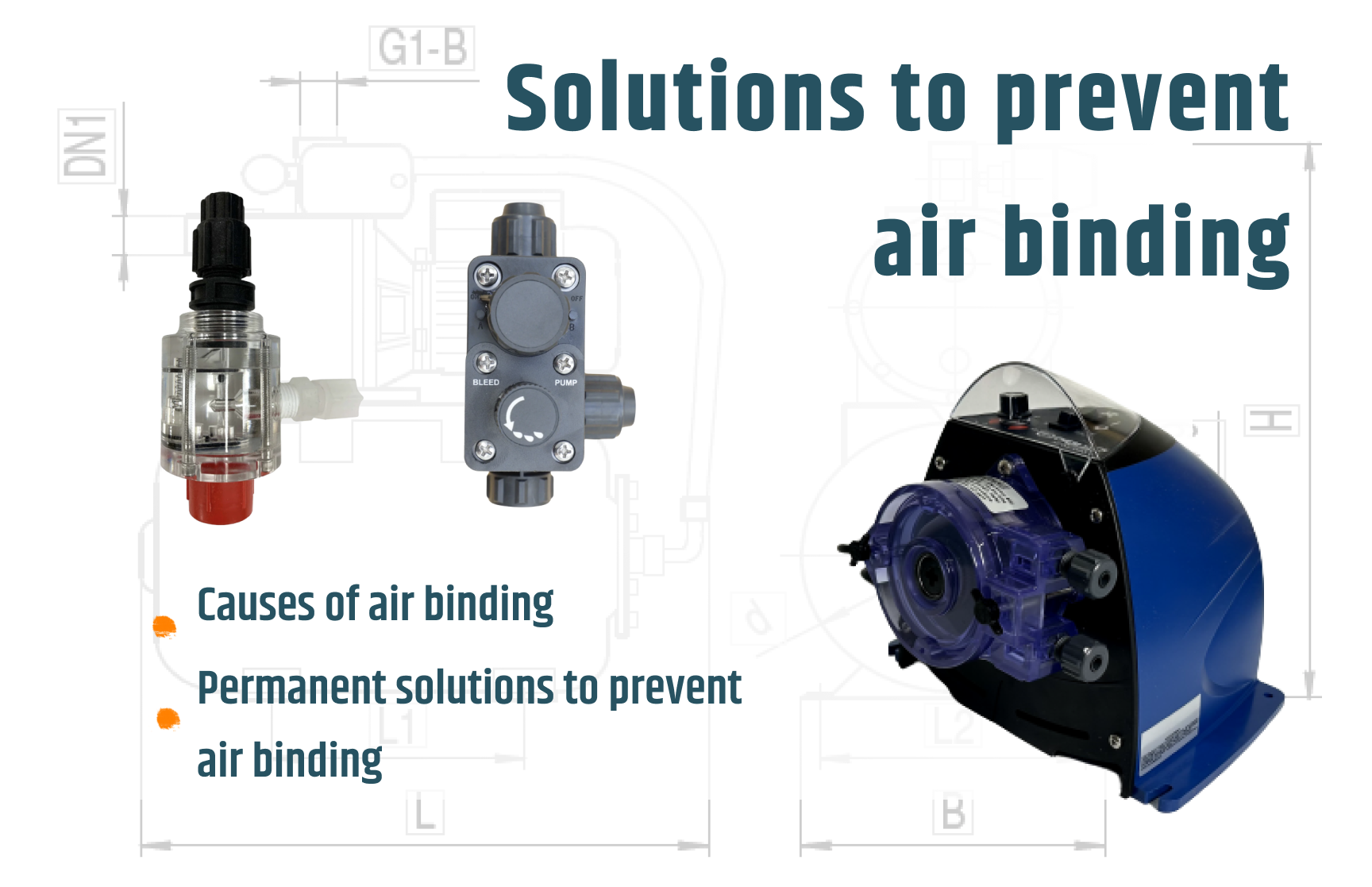Why Your Chemical Feed Pump Gets Air Bound at Night and How to Fix It
Chemical feed pumps are essential for precise chemical dosing in various applications. However, these pumps can become air bound, or air locked, especially when dealing with gaseous chemicals like sodium hypochlorite (liquid chlorine) or hydrogen peroxide. This blog will explain why your pump gets air bound and provide solutions to prevent this issue, ensuring continuous and efficient operation.
Causes of Air Binding
Air binding occurs when gas bubbles form inside the suction tubing and pump head, preventing the pump from effectively moving the liquid. Gaseous chemicals such as sodium hypochlorite and hydrogen peroxide are particularly prone to forming gas bubbles, leading to air binding. When air gets trapped, it prevents the pump from maintaining its prime and results in diminished or no flow rates.
Manual Re-Priming: A Temporary Fix
When your pump gets air bound, you can manually re-prime it to restore its function temporarily. This process involves removing the air from the system and re-establishing the pump's prime. While this method works, it is not a permanent solution and requires regular intervention.
Permanent Solutions to Prevent Air Binding
For a more permanent solution, it is crucial to eliminate the gas automatically when you are not around. Many metering pump manufacturers offer devices specifically designed to address this issue. One of the most effective solutions is the multi-function valve with degassing capabilities.
- LMI’s 4 Function Valve: This valve includes bleed capabilities to release gas from the pump.
- Pulsafeeder’s 5 Function Valve: Similar to LMI’s, this valve also offers bleed capabilities for effective degassing.
These multi-function valves are mounted on the discharge side of the pump. By slightly opening the bleed valve, gas and a small amount of discharge flow can return to the solution tank whenever the pump is operating, ensuring continuous operation without air locking.
Peristaltic Pumps: An Effective Alternative
Another excellent option for handling off-gassing chemicals is the Chem-Tech brand peristaltic pump. Peristaltic pumps offer several advantages over traditional diaphragm pumps:
- Prevents Air Locking: The design of peristaltic pumps prevents air locking and loss of prime.
- Reduced Maintenance: With fewer mechanical parts, these pumps require less maintenance and service.
- Quick and Easy Maintenance: Scheduled service involves simple hose changes, resulting in a lower total cost of ownership.
- Fluid Isolation: The fluid only contacts the inner surface of the hose or tube and the connectors, minimizing contamination risks.
- Seal-less System: The rollers or shoes move fluid through the hose or tube, preventing backflow and eliminating the need for mechanical seals and degassing valves.
The Challenges with Diaphragm-Style Pumps
Air is challenging to compress and move, making it an enemy of diaphragm-style chemical metering pumps. Unlike water, which is denser, air cannot be effectively displaced by these pumps. When air enters the suction or discharge piping, it leads to diminished flow rates or even no flow.
Positive displacement diaphragm metering pumps use check ball valves at the suction and discharge ends. These valves ensure that a fixed amount of liquid enters and exits the pump with each stroke. However, if air is present, the diaphragm cannot move it forcefully enough to unseat and reseat the check ball valves, causing the liquid to remain stagnant. Until the air is bled out or replaced with liquid, the pump will continue to stroke without achieving any meaningful flow.
Conclusion
Air binding in chemical feed pumps can severely impact their performance, but understanding the causes and implementing permanent solutions can ensure optimal operation. Whether through the use of multi-function valves with degassing capabilities or by switching to peristaltic pumps, you can prevent air binding and maintain the efficiency of your chemical feed system. By addressing this issue proactively, you can minimize downtime and extend the lifespan of your equipment.
